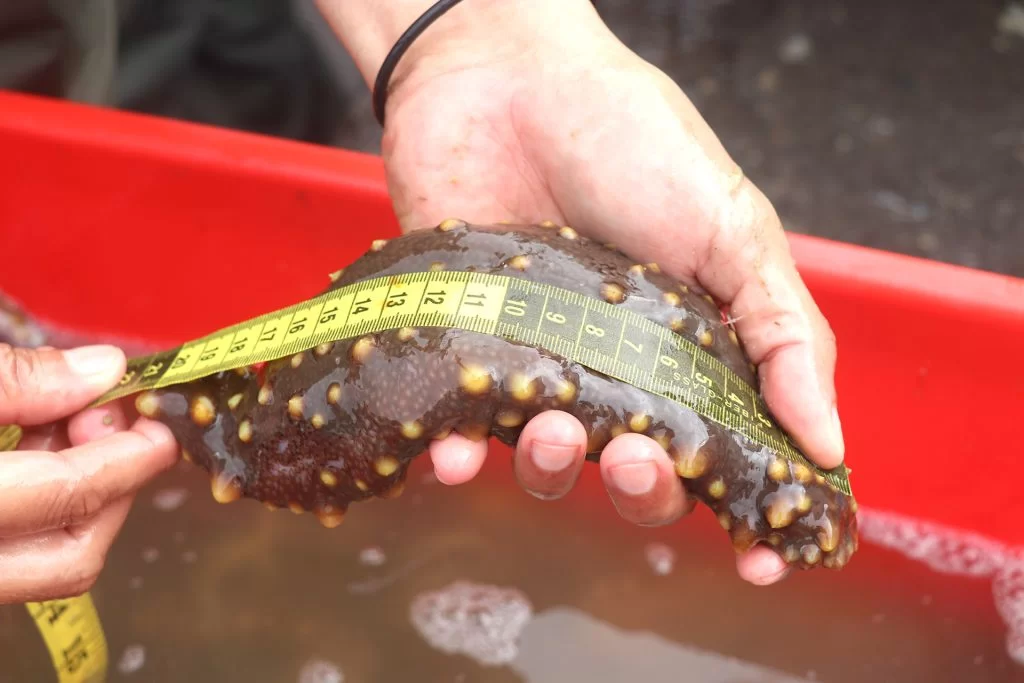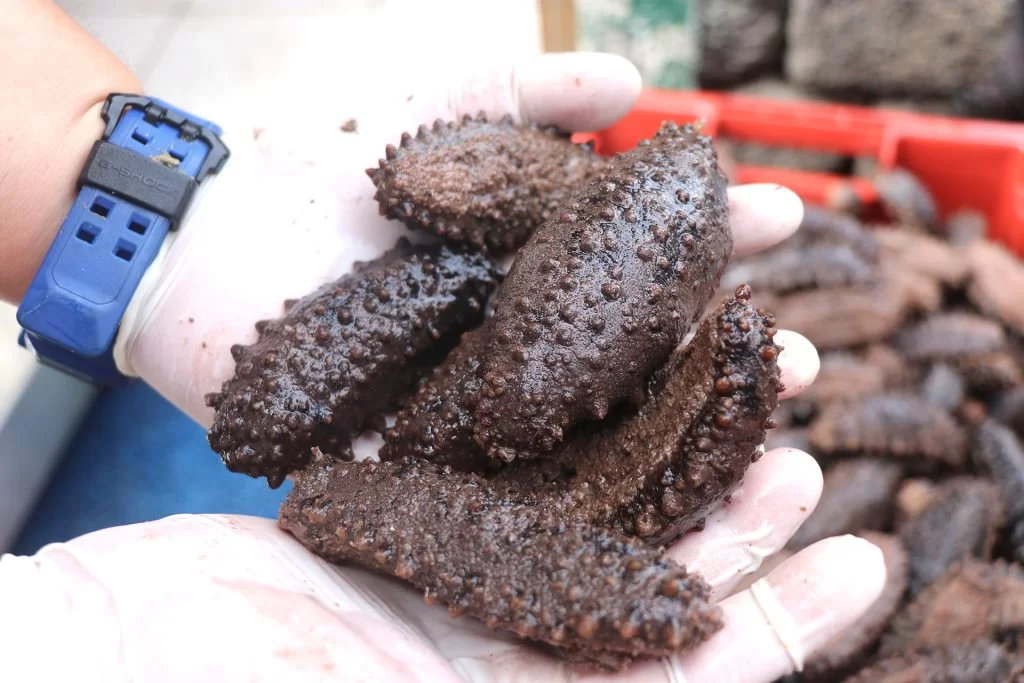They act as natural ocean cleaners. The sea cucumbers clean the ocean by consuming debris and sediment. This activity is crucial for maintaining healthy marine ecosystems. The sustainable management of sea cucumber fishing within the Galapagos Marine Reserve has a high priority, both from a socioeconomic and an ecological perspective.
On October 1, 2023, a new sea cucumber fishing season was authorized within the Galapagos Marine Reserve. The decision was based on strict technical criteria, outlined in a five-year fishing schedule and backed by extensive monitoring that indicated the sea cucumber population recovered enough. The opening of any fishing activity in the region must be approached with caution to ensure that this valuable marine resource is conserved and used sustainably.
Local fishermen can only harvest sea cucumbers if they have valid Artisanal Fishermen of the Marine Reserve licenses (PARMA), issued by the Galapagos National Park Directorate. The permits allow the holders to also participate in other fisheries approved within the Galapagos Marine Reserve.
Commitment to sustainability and the future
On October 25, the Environmental Authority Resolution No. 203 for this year, which established a catch quota set at 600,000 sea cucumbers, was reached. On October 25, the 203 quota for this year was met. The commercialization of sea cucumbers and the transportation period ended on November 2, 2020.
This shows that the government is committed to finding a balance between resource use and conservation. The fishery was limited to certain islands while important conservation areas such as Bolivar Channel were designated as nurseries with no harvesting permitted.
Galapagos Conservancy supports an ecosystem-based management approach, which recognizes the ability of ecosystems to sustain local communities. This approach is demonstrated by the recent sea cucumber fishing, which demonstrates that it is possible for species and habitats to be conserved while still meeting local needs.

As part of the management measures to ensure resource sustainability, Galápagos enforces minimum catch size of 7.9 inches fresh and 2.8 inches processed for sea cucumbers. ©Galápagos National Park Directorate
Galapagos: A Global View
The Galapagos archipelagos efforts to foster harmony between humans and nature are an inspirational global model. The Galapagos Archipelagos’ practices and commitments demonstrate the possibility and necessity of a coexistence between humans and nature. This lesson is applicable worldwide.

Park rangers Galo Rueda (L) and Gonzalo Sevilla enforce fishing regulations in Galápagos to conserve marine resources. ©Galápagos National Park Directorate



